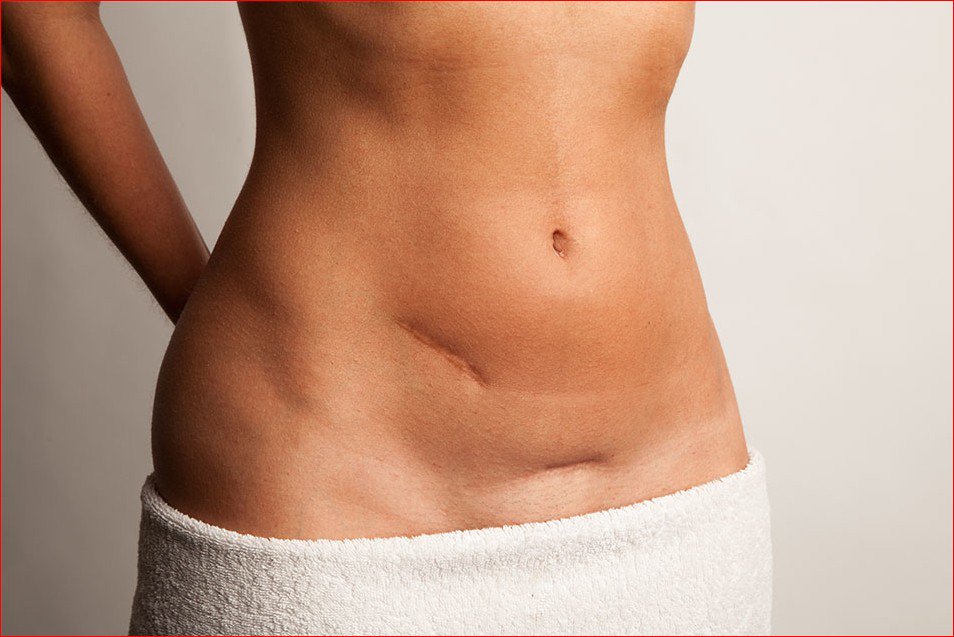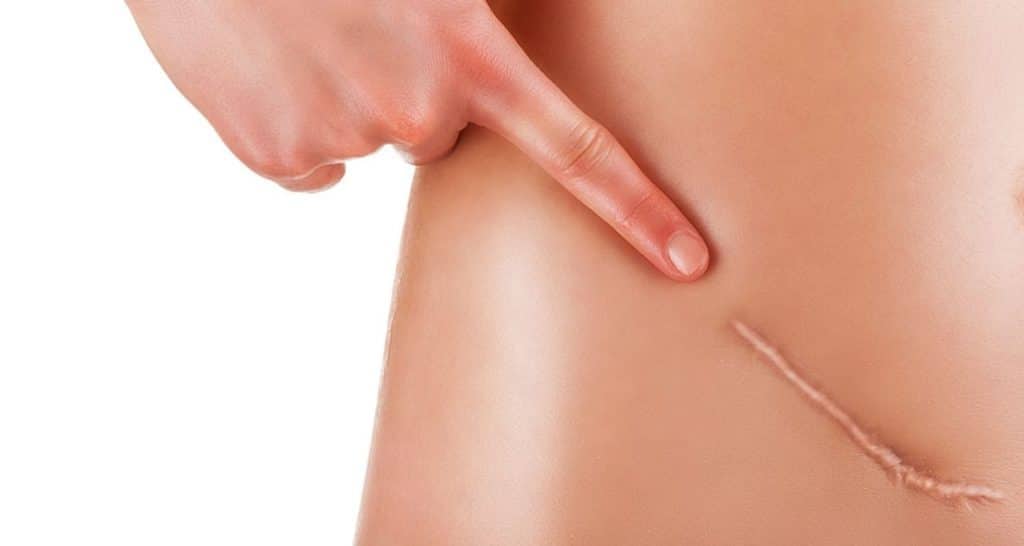Scar revision techniques have evolved dramatically over the years, offering hope for those seeking to improve their skin’s appearance. Once limited to basic methods, modern advancements now provide a range of options tailored to different types of scars. From surgical procedures to non-invasive treatments, these techniques can significantly reduce the visibility of scars and boost self-confidence.
Understanding the latest scar revision techniques is crucial for anyone considering treatment. This guide will explore various methods, their benefits, and what you can expect from each. Whether you’re dealing with acne scars, surgical marks, or traumatic injuries, there’s likely a solution that fits your needs. Dive in to discover how these innovative techniques can help you achieve smoother, clearer skin.
Key Takeaways
-
Understand Your Scar Type: Identifying the type of scar is crucial to determine the most effective treatment method, whether it’s keloid, hypertrophic, or atrophic.
-
Consult a Specialist: Seek advice from a qualified dermatologist or plastic surgeon to understand the best scar revision technique suited for your needs.
-
Prepare for Surgery: Follow pre-surgery guidelines carefully, including any instructions regarding anesthesia and pre-operative care.
-
Know the Process: Familiarize yourself with the steps involved in scar revision surgery, from the initial consultation to post-operative care.
-
Post-Surgery Care: Adhere to post-operative care instructions to ensure optimal healing and minimize the risk of complications.
-
Realistic Expectations: Understand that while scar revision can significantly improve the appearance of scars, it may not completely remove them.
Understanding Scars
What Are Scars
Scars are marks left on the skin after a wound heals. They form as part of the body’s natural healing process. When the skin is injured, the body produces collagen to repair the damage. This new tissue is different from normal skin.
Formation Process
The scar formation process involves several stages. First, blood clots form to stop bleeding. Next, inflammation occurs to remove dead cells and bacteria. Then, new tissue forms to replace damaged skin. Finally, the scar matures and changes over time.
Normal vs Abnormal Scarring
Normal scars are typically flat and pale. They blend in with surrounding skin over time. Abnormal scars include keloids and hypertrophic scars. Keloids are raised and extend beyond the original injury site. Hypertrophic scars are thick but stay within the injury area.
Psychological Impact
Scars can have a significant psychological impact on individuals. Visible scars may affect self-esteem and confidence. Some people feel embarrassed or self-conscious about their appearance. Scar revision techniques can help improve personal confidence.
Importance of Revision
Scar revision is important for mental health as well as physical appearance. Improved appearance can boost self-esteem and reduce anxiety or depression related to scars.
Types of Scars and Treatments
Keloid Scars
Keloid scars are raised, thickened areas of skin. They develop due to an overgrowth of collagen at the site of a healed skin injury. These scars extend beyond the original wound. They can be itchy and uncomfortable.
Treatment options for keloid scars include:
-
Corticosteroid injections: Reduce inflammation and flatten the scar.
-
Cryotherapy: Freezes the scar tissue to reduce its size.
-
Laser therapy: Uses light to remove layers of scar tissue.
-
Surgical removal: Excises the scar, but may require additional treatments to prevent recurrence.
Hypertrophic Scars
Hypertrophic scars are also raised but do not extend beyond the wound boundary. They form due to excessive collagen production during healing. These scars often appear red or purple initially.
Treatment methods for hypertrophic scars involve:
-
Silicone sheets or gels: Flatten and soften the scar.
-
Pressure therapy: Applies pressure to reduce blood flow and limit scar growth.
-
Steroid injections: Decrease inflammation and reduce scar size.
-
Laser treatment: Targets blood vessels in the scar to improve appearance.
Contracture Scars
Contracture scars occur when a large area of skin is damaged, such as from burns. The skin tightens, which can restrict movement. These scars affect muscles and tendons underneath.
Contracture scar treatments include:
-
Physical therapy: Maintains range of motion and prevents stiffness.
-
Skin grafts: Replace damaged skin with healthy skin from another area.
-
Z-plasty surgery: Repositions the scar to relieve tension on surrounding tissues.
-
Tissue expansion: Stretches nearby skin before surgical repair.
Tailored Treatment Approaches
Scar treatment must be personalized. Factors like scar type, location, and patient health influence decisions. For instance, facial keloids may need different care than those on other body parts.
Patients should consult dermatologists or plastic surgeons for evaluation. A combination of treatments might be necessary for optimal results. Non-surgical methods are often tried first before considering surgery.
Steps in Scar Revision Surgery
Pre-surgical Consultation
Doctors begin with a pre-surgical consultation. They assess the scar’s size, depth, and location. Patients discuss their treatment goals.
The doctor explains possible outcomes. Realistic expectations are crucial. They also review medical history to ensure safety.
Assessment of the Scar
A detailed examination follows. The doctor measures the scar. They check for skin texture and color differences.
Photographs may be taken for records. This helps track progress post-surgery.
Treatment Plan Discussion
Next, they discuss the treatment plan. Different techniques might be proposed. Options depend on the scar type and severity.
Patients learn about risks and benefits. The doctor answers any questions.
Procedural Steps
Scar revision surgery has several steps:
-
Anesthesia: Local or general anesthesia is administered.
-
Incision: The surgeon makes a precise cut around the scar.
-
Scar Removal or Modification: The damaged tissue is removed or altered.
-
Closure: Healthy skin edges are brought together carefully.
-
Application of Dressings: Sterile dressings are applied to protect the area.
Each step aims to improve appearance and function.
Post-operative Care
Post-operative care is vital for healing:
-
Keep dressings clean and dry.
-
Avoid strenuous activities initially.
-
Follow medication instructions strictly.
-
Watch for signs of infection like redness or swelling.
Proper care reduces complications and promotes better results.
Follow-up Visits
Regular follow-up visits are essential:
-
Check wound healing progress.
-
Remove stitches if necessary.
-
Address any concerns or complications early.
-
Assess need for additional treatments like laser therapy or injections.
These visits help ensure optimal recovery and satisfaction with results.
Anesthesia in Scar Correction
Local Anesthesia
Local anesthesia is commonly used for minor scar revision procedures. It numbs a specific area of the body. Doctors inject it directly into the tissue around the scar. This type of anesthesia allows patients to remain awake during the procedure. It works well for small scars or simple excisions.
Regional Anesthesia
Regional anesthesia numbs a larger part of the body. It can be useful for more extensive scar revisions. For example, an epidural blocks sensation in the lower half of the body. This type is often chosen when multiple scars need correction in one session. Patients may stay awake but will not feel pain in the targeted region.
General Anesthesia
General anesthesia renders patients completely unconscious. Surgeons use it for complex and lengthy scar revisions. This type ensures that patients feel no pain and are unaware of the surgery happening. It’s ideal for large scars or when combining scar revision with other procedures.
Factors Influencing Choice
The choice of anesthesia depends on several factors:
-
Extent of Surgery: Larger or more complex surgeries usually require general anesthesia.
-
Patient Health: Doctors consider overall health, allergies, and medical history.
-
Patient Comfort: Some patients prefer to be fully asleep during surgery.
Doctors discuss these factors with patients before deciding on the best type of anesthesia.
Ensuring Comfort and Safety
Anesthesia plays a crucial role in patient comfort and safety during scar revision:
-
Pain Management: Proper anesthesia prevents pain during surgery.
-
Reduced Anxiety: Knowing they won’t feel pain helps reduce patient anxiety.
-
Monitoring Vital Signs: Anesthesiologists monitor heart rate, blood pressure, and oxygen levels throughout the procedure.
Treatment Process Explained
Decision-Making Process
Choosing the right scar treatment depends on several factors. The size, depth, and location of the scar are crucial. Patients with larger or deeper scars may need more intensive treatments. Scars on visible areas like the face require careful consideration.
Doctors evaluate the scar’s color and blood supply. These factors affect the treatment choice. A scar with poor blood supply might not heal well after certain procedures.
Laser Therapy Steps
Laser therapy is a common method for scar revision. First, doctors clean the area to be treated. They use a local anesthetic if needed.
Next, they apply laser pulses to the scar tissue. This process breaks down old skin cells and promotes new growth. Multiple sessions are often necessary for best results.
After each session, patients should avoid sun exposure. They must follow specific care instructions to prevent adverse effects.

Cryotherapy Procedure
Cryotherapy involves freezing the scar tissue. Doctors use liquid nitrogen for this procedure.
First, they apply a numbing agent to reduce discomfort. Then, they spray or swab liquid nitrogen onto the scar.
The cold temperature destroys abnormal tissue. Patients might need several sessions for optimal outcomes.
After treatment, it’s important to monitor healing closely. Some patients may experience redness or swelling as side effects.
Steroid Injections Process
Steroid injections help reduce inflammation in scars. They are effective for keloid and hypertrophic scars.
Doctors inject steroids directly into the scar tissue. This process reduces collagen production and flattens the scar over time.
Injections are usually given every few weeks. The number of sessions varies based on patient response and scar severity.
Patients should discuss potential risks with their doctor before starting this treatment.
Multiple Sessions Needed
Complex or severe scars often require multiple treatment sessions. Each session builds on previous ones to improve outcomes gradually.
Patients must commit to attending all scheduled appointments for best results. Skipping sessions can delay progress and affect final outcomes.
Surgical Removal of Scars
Indications
Surgical removal is often needed when non-surgical treatments fail. Contracture scars, which tighten the skin, can limit movement. Large or deep scars may also require surgery. Plastic surgeons recommend surgery for scars that cause functional problems.
Excision Technique
Excision involves cutting out the scar tissue. The surgeon removes the entire scar and then stitches the wound closed. This technique works well for small scars. Healing time varies but usually takes a few weeks.
Grafting Method
Skin grafting is used for larger scars. Healthy skin from another part of the body replaces the removed scar tissue. This method helps in areas where there is insufficient skin to close the wound naturally. Wound healing after grafting can take longer and requires proper care.
Flap Surgery
Flap surgery uses nearby healthy skin to cover the scarred area. Unlike grafts, flaps retain their own blood supply. This makes them more suitable for complex or large scars. Surgeons use this technique to ensure better integration with existing tissues.
Potential Risks
Every surgical procedure carries risks. Infections can occur if wounds are not properly cared for post-surgery. There might be bleeding during or after surgery. Poor wound healing could lead to new scars forming.
Choosing an Experienced Surgeon
Selecting an experienced plastic surgeon is crucial for successful outcomes. An expert will minimize risks and manage complications effectively. They will also provide detailed aftercare instructions to promote optimal healing.
Closing Incisions
Traditional Suturing
Surgeons often use traditional sutures to close incisions. These stitches hold the skin together as it heals. They reduce tension on the wound and help align the skin edges. Proper alignment is crucial for a neat scar.
Sutures come in various materials. Some dissolve over time, while others need removal. The choice depends on the location and size of the injury.
Skin Adhesives
Skin adhesives are another option for closing incisions. They work well on small wounds with minimal tension. The adhesive forms a bond between the top layers of skin, holding them together.
These adhesives are quick to apply and can be less painful than stitches. They also eliminate the need for suture removal, making post-surgery care easier.
Staples
Staples are used for larger or more complex wounds. They provide strong support and can be applied quickly. This makes them ideal for areas under high stress or movement.
However, staples might leave more noticeable marks than other methods. Surgeons decide based on the injured area and expected movement during healing.
Impact on Scar Appearance
The closure technique affects how a scar looks after healing. Sutures can result in fine lines if placed correctly. Adhesives may leave minimal marks but are not suitable for all wounds.
Staples might cause more visible scars due to their size and shape. Each method has pros and cons depending on the direction of tension and wound location.
Healing Process
Proper closure aids in faster healing by reducing inflammation and infection risks. Techniques like suturing align blood vessels, promoting better blood flow to the area.
This alignment helps nutrients reach the site, speeding up recovery during the inflammatory phase of healing.
Importance of Wound Care
Post-surgery care is vital for good results. Keeping the wound clean prevents infection, which can worsen scarring.
Patients should follow their surgeon’s instructions closely:
-
Cleanse the wound gently.
-
Avoid excessive movement that could stress the incision.
-
Monitor for signs of infection like redness or swelling.
-
Attend follow-up appointments for suture or staple removal if needed.
Overview of Surgical Scar Improvement Techniques
Latest Advancements
Recent advancements in scar improvement include minimally invasive procedures and laser technology. Minimally invasive techniques use smaller incisions, reducing tissue damage and recovery time. These methods often result in less noticeable scars.
Laser technology has also improved significantly. Lasers can target specific layers of the skin to reduce scar visibility. Fractional lasers create tiny wounds that stimulate collagen production, which helps in scar healing.
Criteria for Success
Evaluating the success of scar revision surgery involves several criteria:
-
Patient satisfaction: How happy the patient is with the results.
-
Improvement in scar appearance: Reduction in redness, texture, and size.
-
Functionality: Whether the surgery restores normal movement or function if the scar was restrictive.
Doctors often use scales like the Patient and Observer Scar Assessment Scale (POSAS) to measure these outcomes.
Realistic Expectations
Setting realistic expectations is crucial for successful scar revision. Patients should understand that while scars can be improved, they might not disappear entirely. A comprehensive treatment plan includes both surgical and non-surgical options.
Non-surgical treatments like silicone sheets or steroid injections can complement surgical methods. Combining different techniques often yields better results.
Summary
Scar revision techniques offer a way to improve the appearance of scars, whether they’re from surgery, injury, or other causes. Understanding the types of scars and available treatments helps you make informed decisions about your options. The steps in scar revision surgery, anesthesia choices, and treatment processes are crucial for achieving the best results.
If you’re considering scar revision, consult with a qualified specialist to discuss the best approach for your needs. Take control of your skin’s appearance and boost your confidence. Don’t wait—explore your options today and start your journey to smoother, clearer skin. Your path to improved skin health is just a consultation away.
Frequently Asked Questions
What are the common types of scars?
Common types include hypertrophic scars, keloid scars, contracture scars, and acne scars. Each type requires a specific treatment approach.
How is anesthesia used in scar revision surgery?
Anesthesia ensures patient comfort during surgery. Local or general anesthesia may be used depending on the procedure’s complexity.
What steps are involved in scar revision surgery?
Steps include consultation, anesthesia administration, surgical removal or modification of the scar, and closing the incision.
Can all scars be completely removed?
Complete removal isn’t always possible. However, significant improvement in appearance can be achieved through various techniques.
How long is the recovery period after scar revision surgery?
Recovery typically takes 1-2 weeks. Full results may take several months to become visible as the skin heals.
What are non-surgical treatments for scars?
Non-surgical options include laser therapy, steroid injections, dermabrasion, and silicone sheets. These can reduce scar visibility.
Is scar revision covered by insurance?
It depends on your policy. Cosmetic procedures are usually not covered unless deemed medically necessary. Always check with your insurer.





